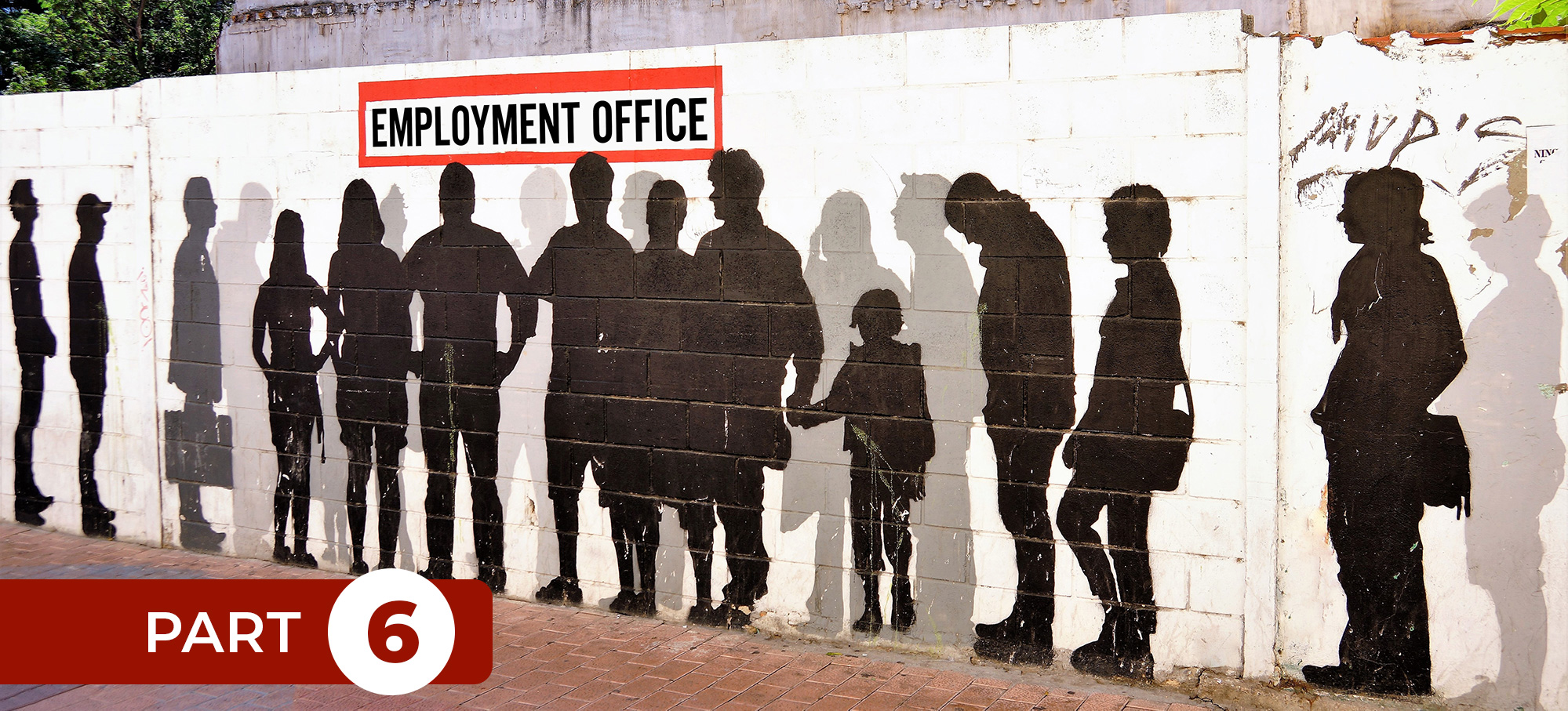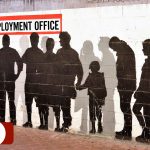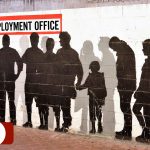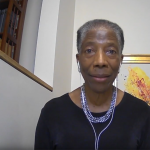This is a continuation of the blog series Today’s White Niggers.
To start reading from the beginning, go to Part 1.
The ruse of white privilege was almost exposed in the antebellum South in 1857 with the publication of The Impending Crisis of the South. The author of this bestseller, Hinton Rowan Helper, exposed the link between race and class in the South:
The lords of the lash are not only absolute masters of the blacks… but they are also the oracles and arbiters of all non-slaveholding whites, whose freedom is merely nominal, and whose unparalleled illiteracy and degradation is purposely and fiendishly perpetuated.[1]
Helper traced the economic benefits. His basic message was to follow the money. By 1860, seven percent of the total white population in the South owned 3,000,000 slaves, three-fourths of the entire slave population. General knowledge of this economic fact could seed rebellion. To read Helper’s book was to literally put one’s life at risk, as historian David Williams observes in his book Rich Man’s War: Class, Caste, and Confederate Defeat in the Lower …
By 1860, 7% of the total white population in the South owned 3 million slaves, three-fourths of the entire slave population. General knowledge of this economic fact could seed rebellion.
According to Williams, a Methodist minister spent a year in jail for simply owning the book and three Southerners were hanged for reading it. There were also public burnings of the book.
Helper’s book was dangerous because it exposed the ruse of white privilege as a racist attack against whites. It revealed the racism (in the form of classism) against poorer whites by the wealthy. The racial assault took the form of economic exploitation. The planter class politically controlled the five million whites too poor to own slaves.
Helper’s book was dangerous because it exposed the ruse of white privilege as a racist attack against whites. It revealed the racism (in the form of classism) against poorer whites by the wealthy.
Williams tracks basic ways most poorer southern whites dealt with the “rich man’s war”: they railed against it, they fought under protest, and they finally deserted it.
Georgia’s decision to secede from the Union, Williams notes, was never put to a popular vote. Rather, it was made by secession delegates, 87 percent of them slaveholders in a state where only 37 percent of the electorate owned slaves. These delegates knew better than to heed anti-secessionist delegates’ plea to submit the decision to the electorate for final determination. After all, more than half the South’s white population, three-quarters of whom owned no slaves, opposed secession.
More than half the South’s white population, three-quarters of whom owned no slaves, opposed secession.
Williams lays bare the Confederacy’s corrupt impressment system. Georgia was one of the first Confederate states to legislate the right to confiscate, or impress, private property for the war. Not surprisingly, corruption ran rampant among impressment officers, of whom one Georgian said, “They devastate the country as much as the enemy.” Another Georgian predicted that the widespread corruption would “ultimately alienate the affections of the people from the government,” which it did.
To add insult to injury, planters continued growing cotton (rather than food) and traded with the North as poorer whites and the army faced starvation. As Williams also notes, funds that should have been distributed to indigent families wound up in the pockets of corrupt officials. Not surprisingly, by 1863, food riots were breaking out all over the South, led by the starving wives left behind as their starving husbands, sons, and fathers died for the rich men and their slaves.
By 1863, food riots were breaking out all over the South, led by the starving wives left behind as their starving husbands, sons, and fathers died for the rich men and their slaves.
And always, the racial degradation of the poor white—the white nigger—continued. Most of the South’s higher-ranking officers came from the slaveholding class and treated those under their command like slaves. One soldier thus complained in a letter home, “A soldier is worse than any negro on [the] Chattahoochee River. He has no privileges whatever. He is under worse task-masters than any negro.” Soldiers were also punished like slaves. They were “whipped, tied up by the thumbs, bucked and gagged, branded, or even shot.”
Thus did the desertions begin. By September 1864, two-thirds of Confederate soldiers were absent without leave. One hundred thousand went over to serve in the Union armies. Thousands more formed anti-Confederate guerrilla bands, of which one historian wrote that they were “no longer committed to the Confederacy, not quite committed to the Union that supplied them arms and supplies, but fully committed to survival.” These bands, Williams tells us, “raided plantations, attacked army supply depots, and drove off impressment and conscription officers. . . . One Confederate loyalist, a veteran of the Virginia campaigns, said he felt more uneasy at home than he ever did when he followed Stonewall Jackson against the Yankees.”
Thus did the desertions begin. By September 1864, two-thirds of Confederate soldiers were absent without leave.
Meanwhile, Williams writes, “One prominent antiwar resident of Barbour County held a dinner honoring fifty-seven local deserters. Though a subpoena was issued against the host, the sheriff refused to deliver it.” The draft was now difficult to enforce, and neither desertion nor evasion was considered disgraceful. Williams concludes that the Confederacy would have collapsed from within if there hadn’t been a Union victory.
And thus the tragic irony of this racist legacy against poorer whites today. Today’s militarized white hate groups, with their pervasive sense of being threatened by the American government, are right but for the wrong reason. They are the emotional progeny of the bands of poorer Southern whites who organized against the Confederacy. These folk were abused and exploited by their overlords, first as wage-slaves and then as cannon fodder. Sadly, these Confederate deserters never understood that not even the one thing they held onto as their own—their self-image as whites—actually belonged to them. Rather it was one among many means used by rich men to demean and exploit both black and white niggers.
Today’s militarized white hate groups, with their pervasive sense of being threatened by the American government, are right but for the wrong reason.
Today’s white supremacists sense that something is radically wrong with a governance system that allows the top one-tenth of one-percent to own almost as much wealth as the bottom 90%.
Benjamin Nathaniel Smith, the white supremacist and member of the neo-Nazi World Church of the Creator, gunned down Asian, Jewish, and African Americans during the July 4, 1999 holiday weekend in Illinois and Indiana. “We see all white people as being raped,” he declared before his shooting spree began, adding that the government was turning on white people. Smith is one of the conscripts in the contemporary white civil war in white America waged against most whites. Smith mistakenly believed he was fighting for his white rights. He was actually fighting to keep in place the white racial system set up to lay him low.[2]
Inattention to the terror experienced by whites has rendered white racism in America an intractable mental, physical, and emotional disorder. In the extreme form of this harrowing mental condition, many whites lose touch with reality and are no longer in control of their actions.[3]
Inattention to the terror experienced by whites has rendered white racism in America an intractable mental, physical, and emotional disorder.
Investigative reporter Joel Dyer puts it this way in his investigation of the rise of white terrorists, white militia, Christian Identity white-theocracy movements in rural and rustbelt America: “Their potential for anger- and paranoia-induced violence is immeasurable [and] there are only a few things that can help when people reach this stage: They can get help, they can turn their anger inward and commit suicide; or they can turn it outward on the rest of us [igniting] a long and bloody period of psychotic discontent.”[4]
I write this blog series for the rest of us, namely, for niggers who want to help niggers rather than kill them.
Niggers of all colors unite.
[1] Hinton Rowan Helper, The Impending Crisis of the South (New York: Burdick Brothers, 1857), ix, 43. Cited by David Williams in his book The Rich Man’s War, 31.
[2] Investigative reporter Joel Dyer, in his book Harvest of Rage: Why Oklahoma City Is Only the Beginning, lays out an astonishing but well-documented account of how the destructive 1980s’ land policies of the federal government in rural America “tortured farm families” (76) and thus created the rage that turns white niggers into terrorists against themselves (drugs, mental disorders, and suicide), the federal government, and other niggers.
[3] Joel Dyer, Harvest of Rage: Why Oklahoma City Is Only the Beginning (New York: Westview Press, 1997), 218.
[4] Dyer, 218. Emphasis added. Dyer summarizes the insights of psychologist Glen Wallace here.










Post a comment